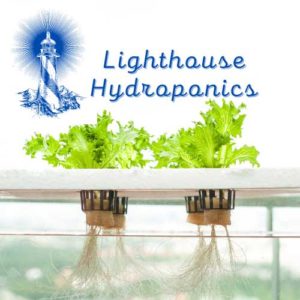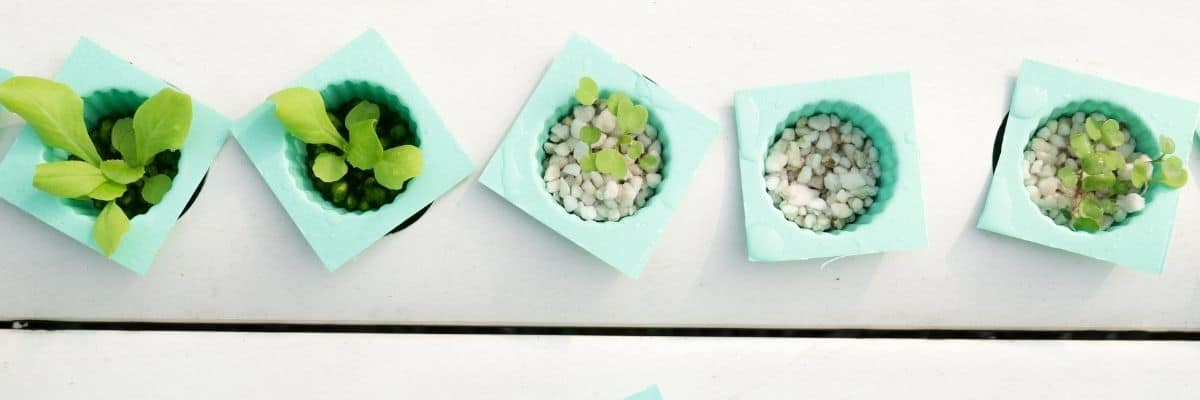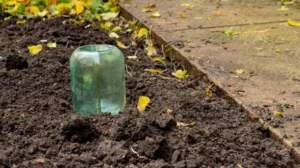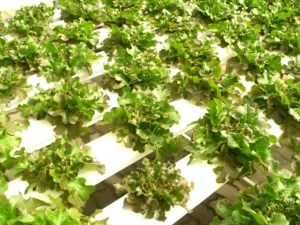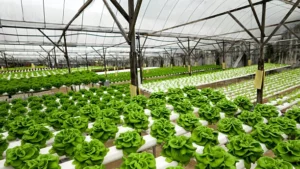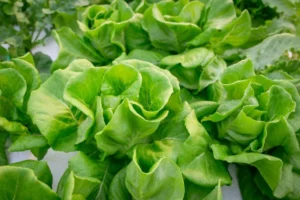In this article, I will walk you through the answer to the big question How Does Hydroponics Work. As an advanced method of farming and gardening, hydroponics provides a means to grow plants faster and with less available resources than with regular agriculture. It is a water-based method of growing all sorts of plants, from fruits and vegetables to flowers and other decorative plants, that can be utilized at home, in greenhouses, or even outdoors in the open. It is becoming more popular than even in urban areas where rich soil is scarce.
What is the difference between hydroponics and soil-based gardening?
Traditionally, farming has always taken place on land. Starting with tilling the soil by hand, people began taming fields for food production using domesticated animals to help take care of things like harvesting and plowing. As technology advanced, so did the equipment used in these processes to increase productivity and efficiency. While humans have been utilizing soil as the basis for food production, there has always been a major setback in using soil.
Soil is not an endless resource; it is highly unlikely that places with the highest population densities are also where soil fertility is at its peak. This means that either people must move to find fertile land or they must grow less produce to take advantage of the land they have.
These issues lead to the invention of hydroponics and aeroponics, two farming techniques that grow crops in water and air respectively; these methods are much more productive than traditional agriculture, can be done anywhere in the world, and use less resources.
What is Hydroponics?
Hydroponics is a method of growing plants in water without the use of soil. Using only water and the seedling, plants are able to grow in a soilless environment without any problem with transportation, land availability, or productivity.
Aeroponics (a sub-type of Hydroponics) is another type of plant growth that also does not require soil. The main concept behind aeroponics is that no medium (soil) is necessary to provide water and nutrients to the plant.
This makes it possible for crops to be grown in a completely soilless environment. The most common method of providing nutrients to the plants is by adding them directly into water or air using a nutrient rich water solution and introducing it to the plans by means of a water reservoir, by using nutrient film technique (NFT), or by creating an aerosol of nutrients and spraying it on the plant’s roots (see other methods of Hydroponics here).
How can plants grow without soil?
In soil based farming and gardening, the plant roots dig deep into the ground to find the nutrients it requires for growth and development, but in hydroponics, the nutrients are delivered directly to the plant’s roots; this means that subsurface irrigation can be used to deliver water and nutrients to the root system. Nutrients are dissolved into the water solution, and the plant takes what it needs.
This makes hydroponics a low-cost method because there are less resources required to grow crops. Water is used as the main nutrient source and medium, but it can easily be recycled to reduce costs even further by recapturing nutrient-rich water from crop uptake. A hydroponic system does not require any soil to grow, so the initial costs of installation and harvesting equipment are lower than traditional farming.
In hydroponics, plants are given a predetermined amount of water and nutrients at the roots – the amount and frequency vary from plant to plant and are determined through the hydroponic system.
When plants are given direct access to water and nutrients, they can grow at a faster rate than in soil. Crops that typically take 2-5 months or longer to mature in the ground, can be grown hydroponically within 30 days, sometimes even as short as 10-14 days to fruition! This is why hydroponics has been praised for being an efficient method of growing crops, because the time it takes to grow is greatly reduced as well as allowing farmers to grow crops with less resources and in smaller spaces.
Hydroponics can withstand harsh environments
This innovation has gained popularity among growers around the world because of its feasibility and efficiency. A hydroponic system only requires water, energy (electricity for light), nutrients (chemical or organic), and a controlled environment for growth. This means that farmers can take advantage of harsh times and be able to grow crops throughout the year – even seasonal ones.
Hydroponics can be used anywhere in the world, with no regard to soil quality. Since the only requirement is access to water and electricity, it is an adaptable method that can be utilized in both rural and urban areas, making hydroponics a great option for people in food deserts (where access to fresh produce is hard or impossible) and for those living in areas of drought.
Whether it be on rooftops, in greenhouses, shipping containers, or out in the open; hydroponics can be done anywhere! Hydroponics transforms the way we think about producing food because there are no limitations due to space and resources like there are with traditional farming.
Does Hydroponic have any disadvantages?
The main drawback of some hydroponic systems is that they require a continuous supply of electricity, which only about 20% of the Earth’s population has access to (1.2 billion people currently live without electricity). Although this may seem challenging, this new innovation can provide solutions for less developed countries that have no access to traditional methods of farming, while developing countries can take advantage of hydroponics to expand their agriculture production. Hydroponic systems are being tested in the harshest conditions on our planet and successfully producing crops where nothing has been able to before. Farmers are even using ice cannons to grow produce in Antarctica!
Hydroponics into the future
As time passes and we move towards a more sustainable self-sufficient future, hydroponics will undoubtedly play an important role in feeding our growing population.
Although this method of agriculture can be more demanding than regular farming practices, the benefits outweigh the difficulties. Unlike traditional methods of farming which depend on soil conditions and seasons, hydroponics allows us to grow crops all year round in a sustainable and clean environment.
The design of a hydroponic system can be adjusted to meet the specific needs of each type of crop and any growing environment. Hydroponics is used in greenhouses, shipping containers, rooftops, under LED lights; anywhere plants need to grow!
One of the most common techniques used for hydroponics is the nutrient film technique, which is a method that supplies crops with their needed nutrients through a simple moving conveyor belt below the roots. An endless loop of water containing nutrients runs from a reservoir to the plant’s root bed and then to a separate wastewater drain. This process provides ample growing space for plants, as well as limiting the amount of water loss by the system.
